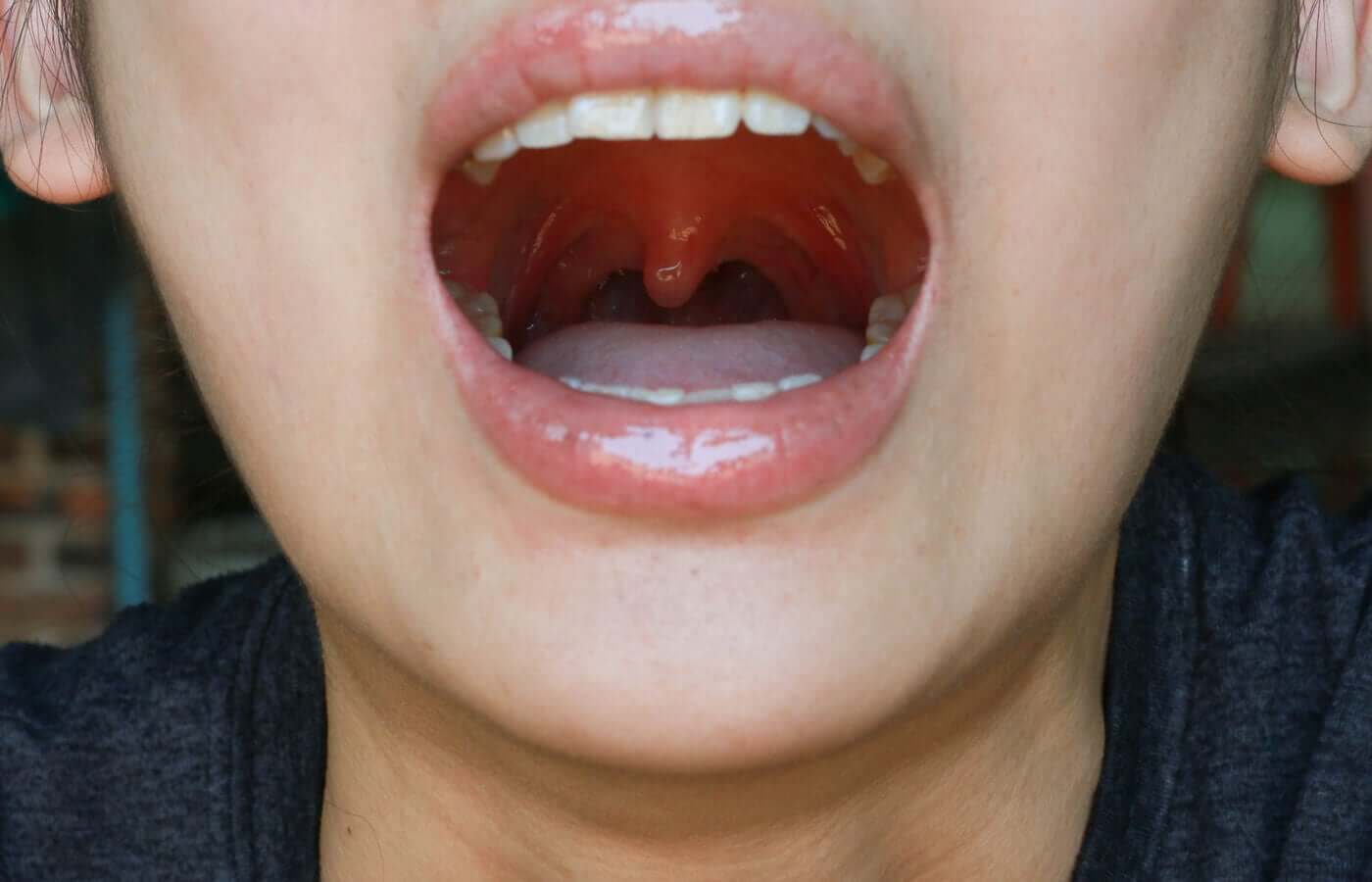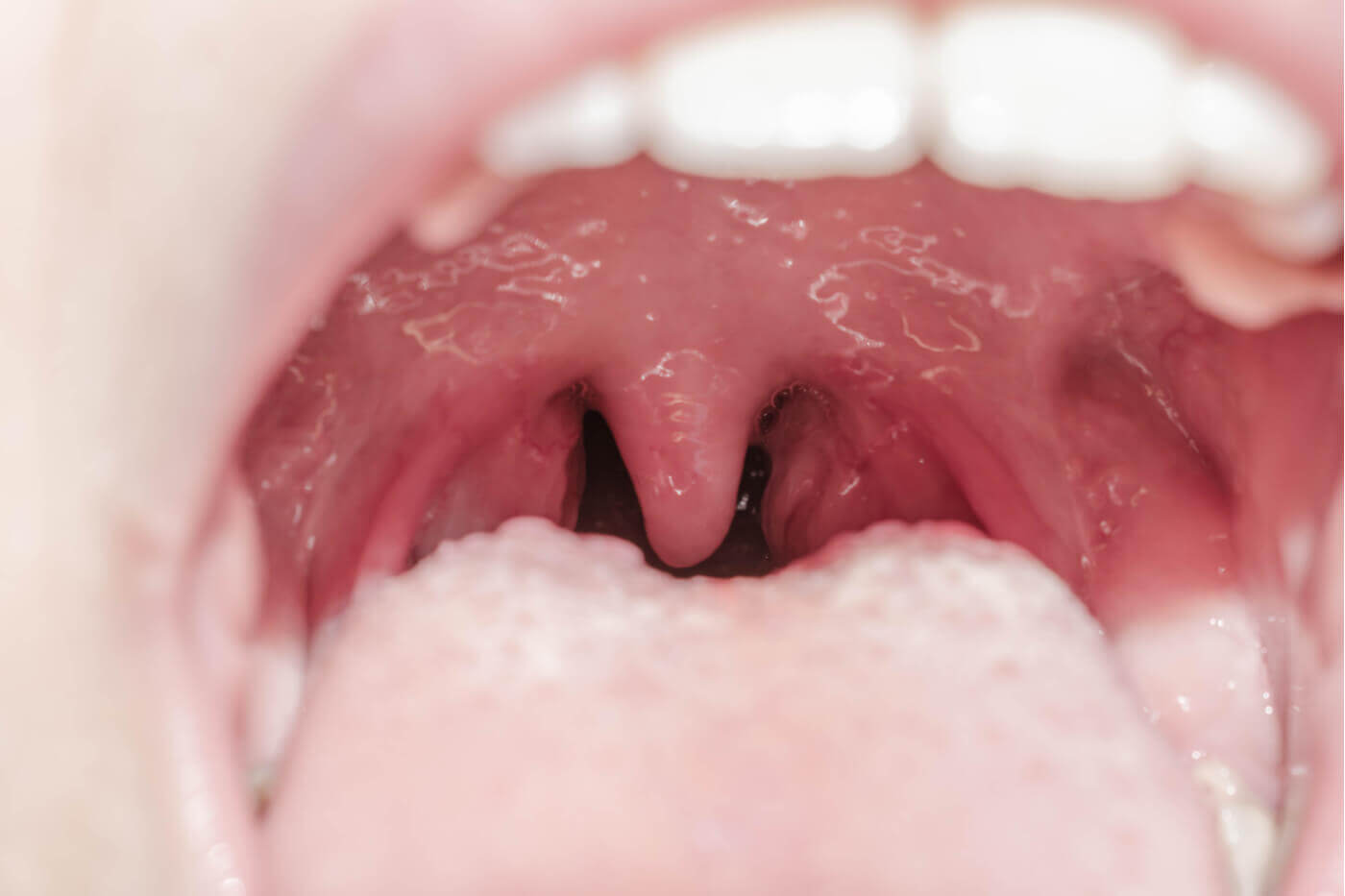All About Uvulitis and Why it Can Occur


Written and verified by the biologist Samuel Antonio Sánchez Amador
Uvulitis is inflammation of the uvula, a small fusiform muscle that hangs down from your soft palate, or the back of the roof of the mouth.
Infectious processes, allergic reactions, injuries after certain medical interventions, or the consumption of inappropriate substances are the usual causes of uvulitis. If you want to know all about uvulitis, continue reading this article!
What’s uvulitis?

According to the National Cancer Institute (NCI), the uvula is the soft flap of tissue that hangs down at the back of the mouth (at the edge of the soft palate). Although experts used to believe that this structure was vestigial, they’ve discovered that it has a clear function: it helps prevent food from entering the nasal cavity.
The medical website Medigraphic defines uvulitis as “an acute cellulitis of the uvula, causing erythema, edema, pain, and fever”. It’s worth mentioning that, although bacterial or viral infections are the most common trigger of this condition, they aren’t the only ones.
To know more, you should read: Diagnosis and Treatment for Viral Pharyngitis
What are its causes?
According to the United States National Library of Medicine, uvulitis is mainly caused by an infection with streptococcus bacteria, a group of bacteria that are pathogenic to humans. Up to 30% of cases of acute pharyngitis are associated with Streptococcus pyogenes, a disease that’s highly related to uvulitis.
Other pathological infectious agents that can cause this clinical picture are Haemophilus influenza type b (Hib) and Streptococcus pneumoniae (pneumococcus). In addition, infectious uvulitis occurs more in young school age children and is quite seasonal, especially in temperate regions. The peak of susceptibility is at five, 10, and 12 years of age.
Infectious uvulitis isn’t the only possible variant of this condition. Meanwhile, the non-infectious type can be caused by the following situations:
- An injury to the back of the throat
- An allergic reaction to pollen, dust, dead skin cells from pets, or certain foods
- Inhaling or swallowing certain toxic elements by mistake
- Surgery, such as removal of the tonsils (tonsillectomy) and other medical procedures, such as an endoscopy
- Smoking
The symptoms of uvulitis
The patient should suspect this condition due to an acute infection when the uvula is the most swollen structure compared to the pharynx if they also have a low-grade fever. Some of the most common general symptoms are the following:
- Fever, in case it’s the product of an infection
- The sensation of having something in the throat, accompanied by choking or gagging
- Cough
- Painful swallowing
- Excessive saliva production
- Poor appetite
According to the Colgate Professional website, if the symptoms of uvulitis don’t disappear after a few days or white spots appear on the back of the mouth, the patient may be suffering from strep throat. Although this is much more common in children, it can also manifest in adults.
Diagnosis and treatment
The medical website Drugs.com states that there are multiple diagnostic tests to detect the underlying causes of uvulitis. Here are some of them:
- Blood tests. They may be necessary to assess the patient’s general health and rule out certain situations.
- Throat culture. A sample of the oral mucosa is obtained and is cultured in a specialized medium. It allows you to detect possible germs that cause uvulitis, if it’s infectious.
- Allergy test. Uvula swelling can be due to an allergic process. It’s important to detect the allergen, as this will help avoid this clinical picture and other much more serious ones, such as anaphylactic shock.
- Neck X-ray. Especially for patients who have difficulty swallowing.
As far as treatment is concerned, it’ll depend on the underlying cause. If the patient has bacterial uvulitis, their doctor will prescribe specific antibiotics to fight the pathogen. On the other hand, if the condition is allergic, the patient will need to take antihistamines. Steroids also reduce swelling.
Home care

According to the UF Health website, the patient can take several measures at home to improve their symptoms. Here are some of them:
- Get lots of rest. Uvulitis can go away on its own or with treatment in one to two days.
- Drink plenty of fluids and gargle with warm salt water to reduce swelling.
- Use sprays that help relieve an itchy throat.
- Take over-the-counter painkillers. They reduce the pain that uvula swelling causes.
- Don’t smoke and avoid secondhand smoking, as this can cause throat irritation.
This article may interest you: Four Remedies to Relieve a Throat Infection
Follow your doctor’s instructions
As you’ve seen, uvulitis is a sign of another underlying condition and isn’t a disease per se. The causes of uvula swelling can be very varied and range from infections to allergies.
In general, this condition goes away with proper treatment in one to two days. The treatment will depend exclusively on the underlying cause, since bacteria aren’t treated in the same way as allergic inflammation.
All cited sources were thoroughly reviewed by our team to ensure their quality, reliability, currency, and validity. The bibliography of this article was considered reliable and of academic or scientific accuracy.
- Úvula, Instituto Nacional del Cáncer. Recogido a 29 de noviembre en https://www.cancer.gov/espanol/publicaciones/diccionario/def/uvula
- Uvulitis: reporte de un caso, medigraphic.com. Recogido a 29 de noviembre en https://www.medigraphic.com/pdfs/micro/ei-2014/ei143g.pdf
- Uvulitis, medlineplus.gov. Recogido a 29 de noviembre en https://medlineplus.gov/spanish/ency/article/001257.htm#:~:text=Es%20la%20inflamaci%C3%B3n%20de%20la,o%20la%20garganta%20
- La función de la úvula, colgate.com. Recogido a 29 de noviembre en https://www.colgate.com/es-co/oral-health/basics/mouth-and-teeth-anatomy/the-role-of-the-uvula
- Drugs.com, uvulitis. Recogido a 29 de noviembre en https://www.drugs.com/cg_esp/uvulitis.html
- UFhealth, uvulitis. Recogido a 29 de noviembre en https://ufhealth.org/uvulitis
This text is provided for informational purposes only and does not replace consultation with a professional. If in doubt, consult your specialist.








